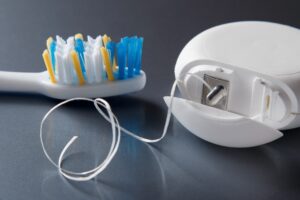Home oxygen therapy can be a true lifesaver, giving you the freedom to breathe easier and enjoy a better quality of life. Whether you’re recovering from an illness or managing a chronic condition, oxygen tanks and concentrators provide vital support right at home.
But here’s the thing—using oxygen at home comes with some serious safety risks. Improper handling can lead to fire hazards, burns, and even health complications.
Let’s look at how to use these devices and still remain safe.
Understanding the Risks of Home Oxygen Therapy
Oxygen and Fire Hazards
Oxygen doesn’t just fuel life—it can also fuel fires, making them ignite and spread faster than in normal air. Even a tiny spark in an oxygen-rich environment can quickly escalate into a dangerous blaze. In fact, the Consumer Product Safety Commission reports that improper use of home oxygen leads to over 1,000 thermal burns and 228 home fires every year.
Health Concerns
- Oxygen Toxicity – Breathing too much pure oxygen can lead to oxygen toxicity, which slows down your breathing and heart rate. If left unchecked, it can become life-threatening.
- Skin Irritation and Nasal Dryness – Many people using oxygen therapy experience irritation around their nose or discomfort from dry nasal passages. While this may seem minor, it’s worth addressing to stay comfortable.
Key Safety Tips for Using Home Oxygen
1. Enforce a Strict No-Smoking Policy
- Post clear “No Smoking” and “No Open Flames” signs around your home near your oxygen equipment.
- Never allow smoking, lighters, candles, or any open flames near oxygen.
2. Maintain Distance from Heat Sources
- Always keep your oxygen tanks or concentrators at least 5 feet away from heat sources like stoves, heaters, and fireplaces.
- Avoid cooking with gas while using oxygen. The combination of flames and oxygen is incredibly risky.
3. Be Cautious with Electrical Appliances
- Never use electrical devices such as hair dryers, curling irons, or heating pads while wearing oxygen. Sparks from these could ignite the enriched air.
- Avoid using extension cords for your oxygen concentrator and plug it directly into a wall outlet.
4. Use Safe Bedding Materials
Sleeping with oxygen? Switch to 100% cotton bedding, as synthetic materials can cause static electricity. Cotton reduces the risk of sparks.
5. Avoid Flammable Products
- Stay away from aerosol sprays such as air fresheners, hairspray, or deodorant near your oxygen equipment. These sprays are highly flammable.
- Skip petroleum-based creams or vapor rubs around your nose or face. Use water-based moisturizers instead.
6. Stay Fire-Prepared
- Always keep a working fire extinguisher close by and ensure your smoke detectors are functional. Test them regularly and replace batteries as needed.
- Notify your local fire department about your oxygen use. This helps them prepare in case of an emergency.
Best Practices for Everyday Use
Use Oxygen Responsibly
- Only use oxygen therapy as prescribed by your healthcare provider. Don’t adjust your flow rate without guidance.
- Turn off your oxygen supply when it’s not in use, and never leave tubing lying on furniture while the oxygen is on.
Properly Store and Handle Oxygen Tanks
- Always keep your oxygen tanks upright and stored in a safe area—not in enclosed spaces like closets or car trunks where airflow is limited.
- Avoid stepping on or tripping over tubes. Replace your tubing before it exceeds 50 feet in length to maintain safe and effective oxygen delivery.
Prepare for Power Outages
- If you rely on an oxygen concentrator, notify your electric company about your equipment and ask about priority restoration services during outages.
- Consider owning backup oxygen equipment, like a large oxygen tank or a generator, to ensure your therapy continues uninterrupted.
Label Your Home
Place visible “Oxygen in Use” signs in key areas of your home to alert visitors and emergency responders to take necessary precautions.
Conclusion
By following these tips, you can use home oxygen therapy safely while minimizing risks. Share this guide with friends and family who might benefit from the information. Safety doesn’t have to be complicated; it just requires thoughtful care.







